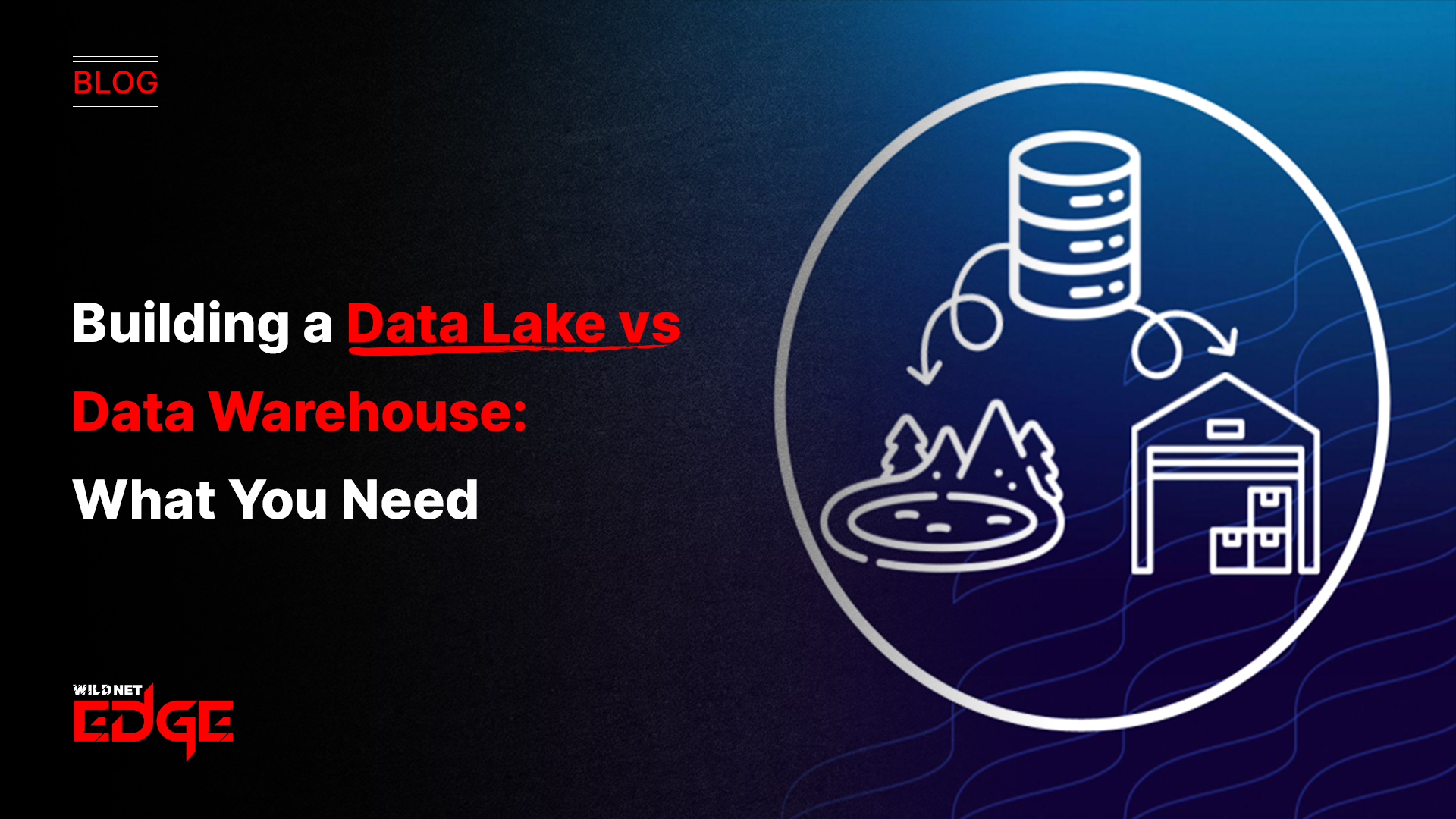Struggling to decide between a data lake vs data warehouse for your business? You’re not alone. Choosing the right big data storage solution can make or break your enterprise data strategy. With the explosion of data volumes and diversity in 2025, organizations need scalable and flexible systems that support advanced analytics, machine learning, and actionable business insights. In this post, I’ll break down what you need to know about these two foundational big data storage models so you can confidently build a system that scales, supports analytics, and delivers real value.
Understanding Big Data Storage Solutions
Big data storage has evolved dramatically as enterprises face increasing demands to handle vast and diverse datasets. Companies today not only store traditional structured data from transactional systems but also semi-structured and unstructured data — think social media feeds, IoT sensor outputs, log files, and multimedia. This diversity demands storage solutions that go beyond traditional relational databases, capable of balancing scalability, cost-efficiency, and speed.
Enterprises require data storage systems that are:
- Scalable: Handle petabytes of data without performance bottlenecks.
- Flexible: Store structured, semi-structured, and unstructured data in a single environment.
- Affordable: Cost-efficient storage for data that may or may not be immediately valuable.
- Optimized for Analytics: Deliver quick insights via fast query performance and integration with AI/ML tools.
Big data storage is no longer just about archiving data but about converting raw information into business intelligence. This is where understanding the nuanced roles of a data lake and a data warehouse becomes critical — they serve distinct purposes, fit different use cases, and jointly shape a robust enterprise data strategy.
Data Lake: A Deep Dive into Flexibility and Scale
A data lake is a centralized repository that stores data in its raw, unprocessed form, allowing businesses to capture everything — structured and unstructured — at any scale. Enterprises adopting data lakes benefit from their exceptional flexibility and scalability, crucial for managing today’s diverse big data landscape.
Characteristics
- Schema-on-read: Data in lakes is stored as-is. The schema is applied only when data is read, enabling maximal flexibility for diverse and evolving datasets.
- Support for all data types: Structured data from databases, semi-structured data like JSON and XML files, and unstructured data such as images, videos, and log files.
- High volume storage: Suitable for high-velocity and high-volume ingestion, supporting real-time and batch data capture.
Technologies Commonly Used
Many platforms have matured to handle data lakes in 2025:
- Hadoop Distributed File System (HDFS): The original open-source data lake backbone supporting large-scale, fault-tolerant storage.
- Amazon S3: Widely used object storage offering virtually unlimited capacity and integration with AWS analytics and ML tools.
- Azure Data Lake Storage (ADLS): Microsoft’s scalable lake solution integrated with Azure Synapse Analytics and ML services.
- Google Cloud Storage: Highly scalable and cost-efficient storage paired with BigQuery for data analysis.
Benefits for Big Data Analytics and Machine Learning
Data lakes are unparalleled for enterprises prioritizing advanced analytics and machine learning use cases due to:
- Flexibility to ingest raw data: No upfront modeling constraints keep doors open for exploratory analysis and evolving data types.
- Support for AI/ML pipelines: Clean, raw data feeds into modern ML frameworks with fewer ETL steps.
- Cost-efficiency: Storage costs are significantly lower compared to warehouses since data isn’t highly transformed.
- Data democratization: Data scientists, engineers, and analysts get direct access to raw datasets, accelerating innovation.
For enterprise data strategy, data lakes are foundational in capturing the “largest possible picture” of business operations and customer behaviors without sacrificing scale or diversity.
Data Warehouse: Structured Storage for Business Intelligence
Unlike data lakes, data warehouses are designed for structured data storage purpose-built for optimized reporting, business intelligence (BI), and operational analytics.
Characteristics
- Schema-on-write: Data is cleaned, transformed, and organized before loading (ETL process), imposing a predefined schema that optimizes query speed and consistency.
- Optimized for query performance: Data warehouses use indexing, partitioning, and in-memory processing to enable fast retrieval even with complex queries.
- Data governance and controls: Strong data quality, compliance, and security mechanisms ensure data reliability for critical decision-making.
Popular Platforms
Several enterprise-grade platforms dominate the 2025 landscape:
- Snowflake: Cloud-native, highly scalable with automatic performance tuning and cross-cloud support.
- Amazon Redshift: Integrated with AWS ecosystem, efficient for petabyte-scale analytics workloads.
- Google BigQuery: Serverless warehouse offering real-time analytics and seamless integration with Google’s data ecosystem.
- Microsoft Synapse Analytics: Combines data warehousing and big data analytics in a unified workspace.
Best Use Cases
Data warehouses are ideal for organizations that require:
- Operational reporting: Daily financial and sales reports, KPI dashboards, supply chain metrics.
- Business intelligence: Structured analytics for insights into customer behavior, inventory, and marketing ROI.
- Regulatory compliance: Enforced data quality and audit trails for sensitive industries like finance or healthcare.
By focusing on structured and refined data, warehouses provide fast and reliable answers to business questions, powering strategic initiatives based on trusted information.
Key Differences Between Data Lake vs Data Warehouse
To further clarify the data lake vs data warehouse debate, consider these crucial distinctions:
| Factor | Data Lake | Data Warehouse |
| Data Type & Format | Raw, structured, semi-structured, unstructured | Clean, structured, highly organized |
| Schema | Schema-on-read (flexible, late binding) | Schema-on-write (strict, early binding) |
| Cost & Storage Efficiency | Low-cost storage for massive data | Higher cost due to transformation and optimization |
| Query Performance & Latency | Slower for complex queries, evolving performance with new tech | Fast querying, optimized for BI workloads |
| Flexibility vs Governance | High flexibility; less enforced governance | Strong governance; less flexible |
| Ideal Scenarios | Data exploration, ML, large-scale data storage | Business reporting, compliance, operational decision-making |
This table highlights why neither solution alone fits all enterprise needs. Instead, careful evaluation of business goals, data diversity, and usage patterns determines which model—or what combination—is right.
Integrating Data Lakes and Warehouses for a Hybrid Approach
Increasingly, enterprises are not choosing between data lakes or data warehouses—they’re leveraging both through hybrid architectures to harness the best of both worlds.
Data Lakehouse Concept and Emerging Platforms
The data lakehouse is an emerging paradigm combining the flexibility of data lakes with the management features of data warehouses. Key platforms include:
- Databricks Lakehouse Platform: Integrates scalable data lake storage with Delta Lake technology supporting ACID transactions and optimized queries.
- Apache Hudi and Apache Iceberg: Open-source projects enabling data versioning, governance, and incremental data processing on data lakes.
- Snowflake’s Unistore: Incorporates transactional capabilities on top of scalable storage for unified analytics.
Use Cases for Hybrid Architectures
Large enterprises use this combined approach to:
- Store raw data for machine learning and flexible exploration in data lakes.
- Feed curated, structured data into warehouses or lakehouses for business reporting.
- Unite disparate analytics teams with a common data platform ensuring consistency and governance.
Strategies for Seamless Data Movement and Governance
Successful integration depends on:
- Automated ETL/ELT pipelines: Tools like Apache NiFi, Talend, or Fivetran ingests and transforms data efficiently.
- Metadata management and cataloging: Unified catalogs (e.g., AWS Glue, Alation) maintain data lineage and discoverability across environments.
- Data governance frameworks: Role-based access, encryption, and compliance tooling to protect sensitive data while enabling access.
By adopting a hybrid data storage architecture, enterprises optimize costs, governance, and performance, driving a comprehensive enterprise data strategy that supports multiple workloads and user profiles.
Conclusion
Choosing between a data lake vs data warehouse is crucial for a successful enterprise data strategy and efficient big data storage. Data lakes shine in flexibility, scale, and supporting exploratory analytics and machine learning, while data warehouses excel in structured storage, fast querying, and trusted business intelligence. The evolving landscape of hybrid models like data lakehouses presents exciting opportunities to combine these strengths.
Understanding these differences and use cases empowers business leaders to build data infrastructures that unlock actionable insights, scale with business growth, and align with strategic goals. When it comes to expert guidance and implementing these complex solutions, WildnetEdge stands out as a trusted partner. With tailored data architecture strategies and industry-leading expertise, WildnetEdge helps enterprises modernize their big data storage solutions and optimize their enterprise data strategy.
Ready to optimize your data infrastructure for 2025 and beyond? Connect with WildnetEdge today.
FAQs
Q1: What are the main differences between a data lake and data warehouse?
A data lake stores raw, unstructured data with schema-on-read flexibility, allowing diverse data types and scalability. A data warehouse stores structured data optimized for fast querying with schema-on-write, providing consistent, governed data ideal for business intelligence.
Q2: How does a data lake fit into an enterprise data strategy?
Data lakes offer scalable storage for diverse, raw data sets, enabling advanced analytics and machine learning. This flexibility supports innovation and data democratization within enterprise data strategies.
Q3: Can a business use both a data lake and a data warehouse?
Yes, many enterprises adopt a hybrid approach, storing raw data in lakes and curated structured data in warehouses. This combined model, often called a data lakehouse, optimizes both exploratory analytics and reliable BI reporting.
Q4: What are the cost implications of choosing a data lake over a warehouse?
Data lakes generally provide more cost-effective storage as they retain raw data with minimal transformation. Data warehouses, optimized for query speed and structure, tend to incur higher costs for compute and storage.
Q5: Which big data storage solution is better for real-time analytics?
Data warehouses usually offer better real-time analytics performance due to optimized query engines. However, modern data lake architectures and lakehouse platforms are increasingly supporting real-time and streaming analytics use cases.

Nitin Agarwal is a veteran in custom software development. He is fascinated by how software can turn ideas into real-world solutions. With extensive experience designing scalable and efficient systems, he focuses on creating software that delivers tangible results. Nitin enjoys exploring emerging technologies, taking on challenging projects, and mentoring teams to bring ideas to life. He believes that good software is not just about code; it’s about understanding problems and creating value for users. For him, great software combines thoughtful design, clever engineering, and a clear understanding of the problems it’s meant to solve.
 sales@wildnetedge.com
sales@wildnetedge.com +1 (212) 901 8616
+1 (212) 901 8616 +1 (437) 225-7733
+1 (437) 225-7733































